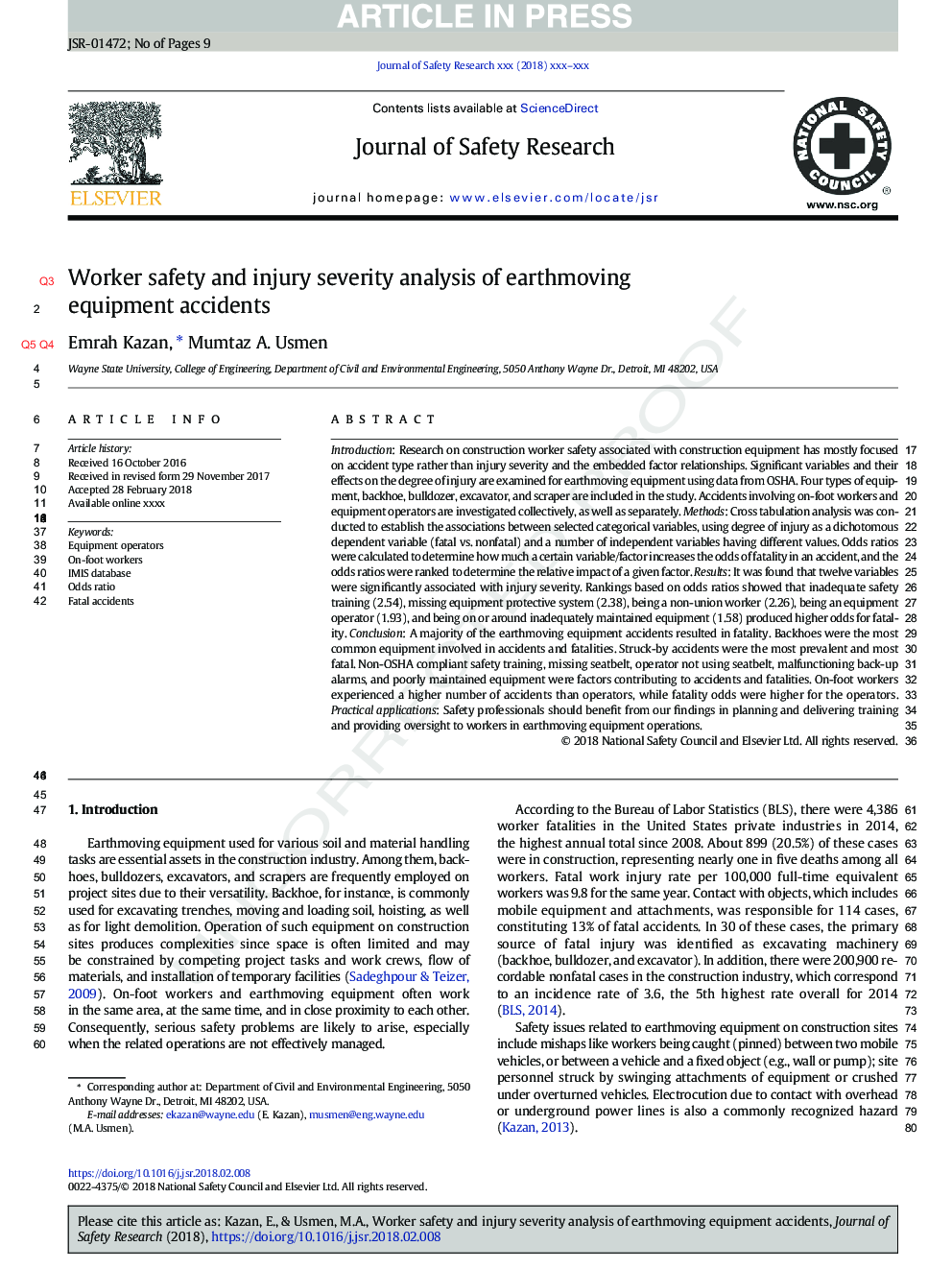| کد مقاله | کد نشریه | سال انتشار | مقاله انگلیسی | نسخه تمام متن |
|---|---|---|---|---|
| 6973613 | 1453295 | 2018 | 9 صفحه PDF | دانلود رایگان |
عنوان انگلیسی مقاله ISI
Worker safety and injury severity analysis of earthmoving equipment accidents
ترجمه فارسی عنوان
تجزیه و تحلیل شدت آسیب ایمنی کارکنان و تصادفات وسایل نقلیه متحرک
دانلود مقاله + سفارش ترجمه
دانلود مقاله ISI انگلیسی
رایگان برای ایرانیان
موضوعات مرتبط
مهندسی و علوم پایه
مهندسی شیمی
بهداشت و امنیت شیمی
چکیده انگلیسی
Introduction: Research on construction worker safety associated with construction equipment has mostly focused on accident type rather than injury severity and the embedded factor relationships. Significant variables and their effects on the degree of injury are examined for earthmoving equipment using data from OSHA. Four types of equipment, backhoe, bulldozer, excavator, and scraper are included in the study. Accidents involving on-foot workers and equipment operators are investigated collectively, as well as separately. Methods: Cross tabulation analysis was conducted to establish the associations between selected categorical variables, using degree of injury as a dichotomous dependent variable (fatal vs. nonfatal) and a number of independent variables having different values. Odds ratios were calculated to determine how much a certain variable/factor increases the odds of fatality in an accident, and the odds ratios were ranked to determine the relative impact of a given factor. Results: It was found that twelve variables were significantly associated with injury severity. Rankings based on odds ratios showed that inadequate safety training (2.54), missing equipment protective system (2.38), being a non-union worker (2.26), being an equipment operator (1.93), and being on or around inadequately maintained equipment (1.58) produced higher odds for fatality. Conclusion: A majority of the earthmoving equipment accidents resulted in fatality. Backhoes were the most common equipment involved in accidents and fatalities. Struck-by accidents were the most prevalent and most fatal. Non-OSHA compliant safety training, missing seatbelt, operator not using seatbelt, malfunctioning back-up alarms, and poorly maintained equipment were factors contributing to accidents and fatalities. On-foot workers experienced a higher number of accidents than operators, while fatality odds were higher for the operators. Practical applications: Safety professionals should benefit from our findings in planning and delivering training and providing oversight to workers in earthmoving equipment operations.
ناشر
Database: Elsevier - ScienceDirect (ساینس دایرکت)
Journal: Journal of Safety Research - Volume 65, June 2018, Pages 73-81
Journal: Journal of Safety Research - Volume 65, June 2018, Pages 73-81
نویسندگان
Emrah Kazan, Mumtaz A. Usmen,
